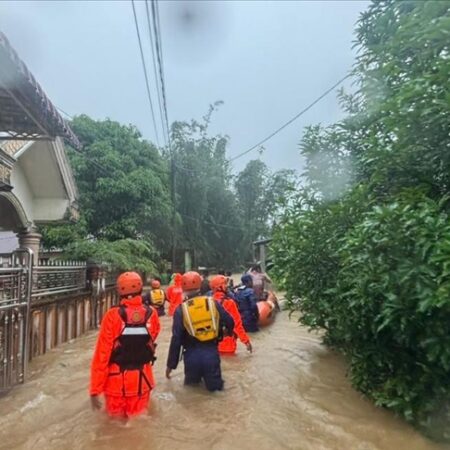Its home might be a tiny island in the Indian Ocean, but the Sri Lankan leopard is big on stature. And although the beautiful cats are top predators here, amazingly little is known about them. Now, a group of researchers is setting out to change that.
One of the nine recognised leopard subspecies, Panthera pardus kotiya has the familiar spotted coat and colouration, but these island cats are generally larger than their cousins elsewhere. And while leopards in other parts of the world must compete with bigger feline rivals like tigers and lions, Sri Lanka’s cats have their pick of prey – and they’ve been known sample far and wide, from small lizards to large sambar deer.
Known locally as “kotiya” or “siruththai puli”, the cats roam across a range of forest and scrub habitats on the island, and exist even outside of protected areas, but much about their lives remains a mystery – scientists don’t even know precisely how many of them there are.
Sri Lanka’s lengthy civil war is largely to blame for those knowledge gaps. Conflict and conservation don’t mix, and it’s been only a few short years since the island nation emerged from decades of fighting.
Now, a new project spearheaded by the Sri Lankan Leopard Trust will finally give researchers the chance to get to know the elusive cats a little better. “There is almost no information on the numbers of Sri Lankan leopards, despite the fact that they are genetically different to leopards in India and the rest of Asia,” says the project team, which brings together scientists and conservationists from various fields and research institutions.
If these unique predators are to be effectively protected, scientists must first learn more about them – and counting some cats is a good place to start.
Leopards might be famously adaptable felines, and the earth’s most widespread big cats, but research released earlier this year – the most comprehensive worldwide study of leopards to date – indicates they’re at greater risk than we thought. Overall, the cats have lost as much as 75 percent of their historical range since the 1700s. And while some populations are faring well for now, several subspecies, particularly those in the Middle East and southeast Asia, are under serious threat.
Sri Lanka’s cat, one of only two island leopards left on the planet, is currently listed as Endangered by the IUCN. The leopards’ coveted pelts make them vulnerable to poachers, and disappearing habitat puts them in the path of conflict with humans. In recent years, reports of such conflicts, like leopards unintentionally caught in wire traps, have been on the rise.
Estimating leopard numbers is the team’s main goal, but there is also hope that the planned survey will provide more information about the kinds of threats the cats face in the wild. Tracking an elusive, largely nocturnal predator, however, is no easy feat.
The best solution is a system of remote camera traps that will capture photographs of the cats when triggered. Because each leopard has a unique pattern of spots (or rosettes), scientists can identify individuals in these images and even keep tabs on their movements.
“Leopard rosettes are similar to human fingerprints, and they’re the easiest thing that we can use to tell them apart,” explains Alex Braczkowski, one of the leopard biologists involved in the project. “When it comes to analysing all of our camera-trap data, we will have to be sure that we haven’t over or under counted the leopards from photographs. That’s when we use simple rosette shapes and patterns as quick reference codes.”
The team plans to set up 30 cameras across three key sites, including a 14,000-hectare section of the iconic Yala National Park, a stronghold thought to have one of the highest leopard densities anywhere in the world. The surveys will be repeated every two years to help the researchers understand how populations change over time.
“The project will produce a set of guidelines for future monitoring of leopard numbers within these three sites,” explains the team.
Knowing how many cats live in Sri Lanka’s leopard strongholds should help wildlife authorities make better conservation decisions about their most critical habitats. As the island’s top predators, the leopards play a key role in local ecosystems, so protecting the cats will also benefit many of the other unique species they share the island with.
If you want to help the team count Sri Lanka’s leopards, visit the project’s fundraising page to see how you can contribute.
Earth Touch












![TV-Poster-All-Exhibition-Sri-Lanka-in-Focus-USA-2025[1]](https://www.srilankafoundation.org/wp-content/uploads/2025/04/TV-Poster-All-Exhibition-Sri-Lanka-in-Focus-USA-20251-450x450.jpg)









